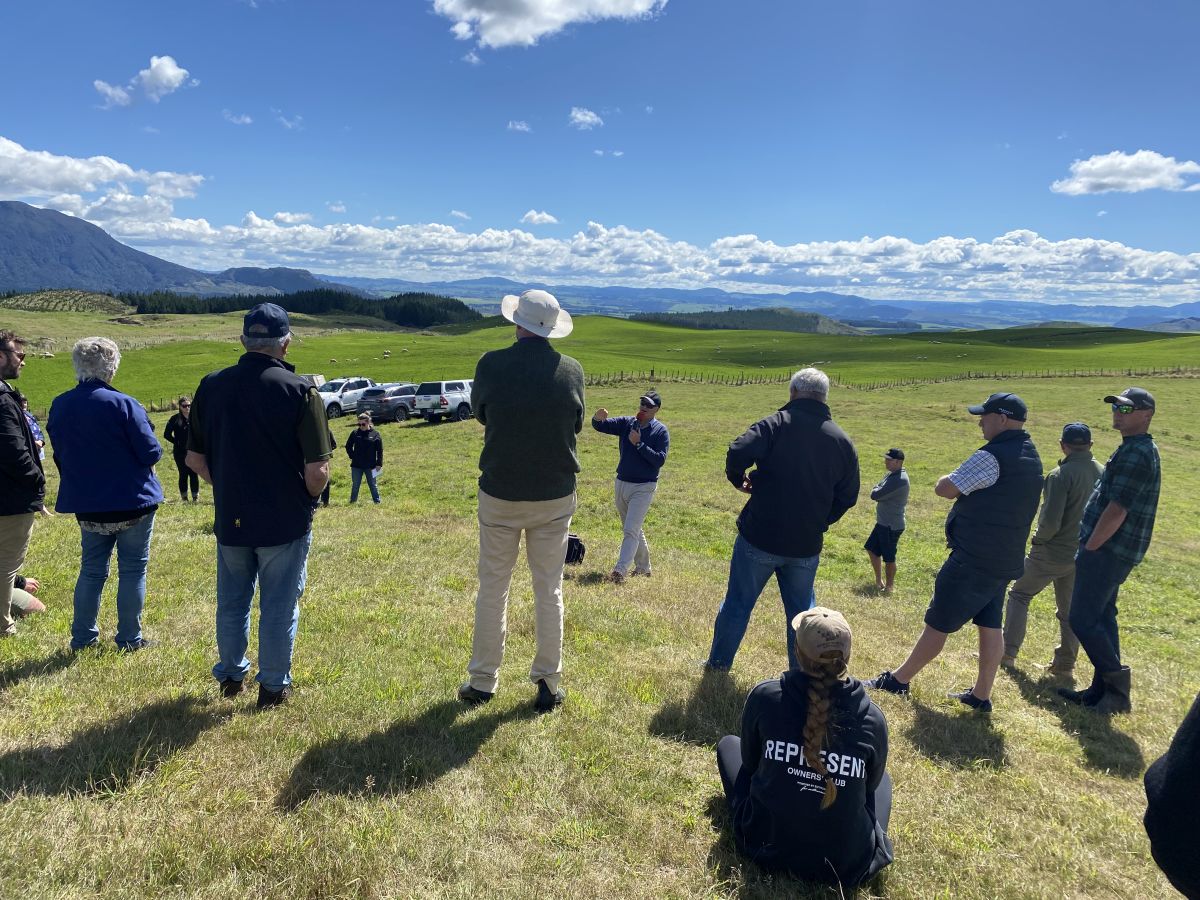Professor Moot spent two days last week (mid March 2023) with farmers interested in growing and grazing lucerne near Taupo and Pukekawa. Spring sowing after weeds had been controlled was a focus of the days. In particular, the opportunity to use glyphosate this autumn on Californian thistles (Cirsium arvense), browntop (Agrostis capillaris) and other rhizomatous weeds was discussed.
Prof Moot explained that with a lot of surplus feed around in the North Island, and non limiting soil moisture conditions, the weeds are green and primed to take-up the chemical. He noted that autumn was the most effective time to spray translocatable herbicides because the plants are prioritising storing sugars in their roots and underground storage organs. Glyphosate attaches to those sugars and is transported down to the roots and rhizomes for a more effective kill. Prof Moot commented that weed wiping callies in two directions at this time of year is the first step in control. The plants are most susceptible when they are just budding up. He noted that deciduous trees are doing the same thing at this time of year as the days get shorter and the plants prepare for winter. He suggested glyphosate on lucerne herbage at this time of year was also the most effective way to kill it because this is also when it is storing sugar and nitrogen for next year. This is the reason farmers are advised to rest their lucerne at some stage between the end of January and the end of May – to rebuild reserves ready for spring.
He was challenged about advocating the use of glyphosate and commented that it is an effective and safe chemical. He noted that it inhibits an enzyme that is only present in plants and its broad spectrum of control meant it was effective on perennial weeds. He suggested anyone with an interest in the misinformation around lucerne/alfalfa should read a French scientific report published in 2020 that detailed how the European media and American lawyers had captured the conversation with little attention to the facts. The report is available from Prof Moot on request – or directly from the website:
https://www.fondapol.org/en/study/glyphosate-separating-the-wheat-from-the-tares/
Prof Moot finished the events by highlighting productivity gains in the sheep and beef sector offered the greatest opportunity for farmers to remain profitable, reduce green house gas emissions and contribute to the well-being of rural communities.


(Thanks to Maria Shanks at B+LNZ for supplying the photos)
